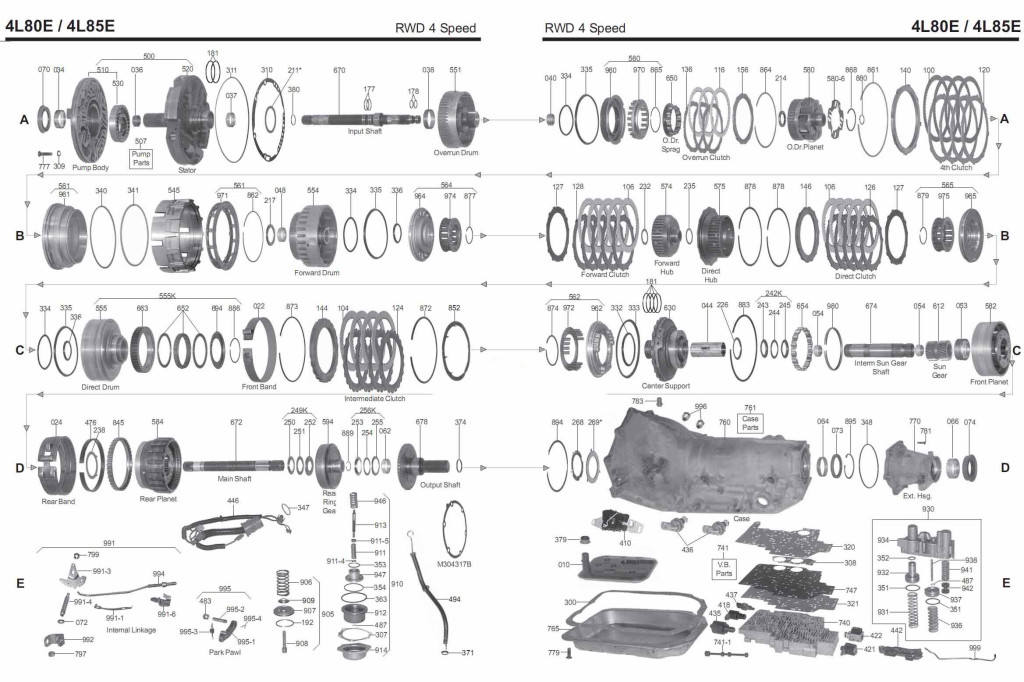
The rear tail housing bolt pattern was not tampered with in any way.

But the added overdrive gear gave the 4L80E an edge over its predecessor, even though it required a somewhat longer case and an extra gear set. GM relied heavily on – and used – several parts or components and designs derived from the TH400 transmission when developing the 4L80E. Although the 700R4 was a tough transmission, it could not really hold a candle to the TH400 transmission.Īnd for this particular reason, GM had no choice but to start developing a pretty heavy-duty automatic overdrive. GM quickly recognized a gap revealed by the rapidly expanding success of the 4L80E/700R4 automatic transmission. It was practically the last hold-out of the entire old-school automatics with no overdrive or lock-up converter. The latter is a tough and enduring transmission at GM – as well as other marques. The Development of the 4L80E TransmissionĪs mentioned briefly earlier, the 4L80E automatic transmission was directly developed from the TH400 transmission. Note that the terms ‘4L80’ and ‘4L85’ may be used without adding the suffix, ‘É.’ This is because every GM automatic is electronically controlled now and, therefore, doesn’t need differentiation. Every reference to the 4L80E also applies to this variant, except where stated otherwise. The latter is constructed such that it can efficiently handle heavy-duty use. In this post, you will learn more about the 4L80E transmission as well as its variant, i.e., the 4L85E. This automatic transmission has remained in production through the 2009+ model year. The 4L80E also features a lock-up torque converter, an added overdrive gear, as well as state-of-the-art electronic controls. It is constructed to a great extent on the 400 in strength and parts. The legendary TurboHydramatic TH400 automatic transmission was the 4L80E transmission’s immediate predecessor.

The 4L80E transmission was introduced in the GM C/K Trucks line-up – to the delight of motorists – in 1991.


 0 kommentar(er)
0 kommentar(er)
